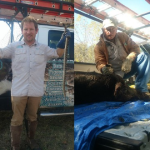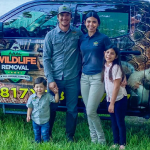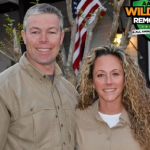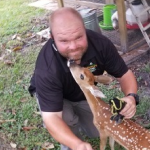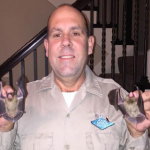All snakes are beneficial to their natural environment. From our human perspective, snakes are especially useful in keeping the rodent population in check.That being said, when rattlesnakes or other venomous snakes live too close to humans, the risks can outweigh the rewards. Although death is now a rare result from a snake bite, a single rattlesnake bite can still result in a hospital bill of more than $100,000.
They slither, they rattle, and for some, they instill fear with just a mere mention. Rattlesnakes are undeniably one of North America's most iconic reptiles. While their reputation often precedes them, there's so much more to learn about these incredible creatures than just their bite.
Appearance
General Characteristics
Rattlesnakes belong to the pit viper family and are renowned for the unique rattle at the end of their tail, which they shake as a warning to potential threats. They possess a triangular-shaped head, hinged fangs, and keeled scales, giving them a slightly rough appearance.
Coloration/Patterns/Distinctive Markings
Rattlesnakes exhibit a range of colors and patterns, largely dependent on their specific species and habitat. Typically, they sport patterns that resemble bands, diamonds, or blotches which act as camouflage. Their color palette can range from browns and grays to more vibrant yellows and greens.
Size/Features
Depending on the species, rattlesnakes can vary in size, with some being as small as 1 foot and others reaching lengths of over 8 feet. Their most distinctive feature, the rattle, is made up of interlocking segments that are added with each shedding of their skin.
Biology
Digestion and Diet
Rattlesnakes are carnivores, primarily feeding on small animals such as rodents, birds, and other small mammals. Their venom not only immobilizes prey but also starts the digestive process. Their metabolism is slow, allowing them to survive on infrequent meals.
Reproduction
Rattlesnakes are ovoviviparous, which means they give birth to live young after carrying eggs inside their bodies. Mating typically occurs in the spring, with the females giving birth in late summer to early fall.
Unique Sensory Systems
Rattlesnakes are equipped with heat-sensitive pits located between their eyes and nostrils. These pits allow them to detect warm-blooded prey in complete darkness. Additionally, they possess a highly-developed sense of smell and a specialized organ, the Jacobson’s organ, to detect chemical cues.
Habitat
Preferred Environments
These snakes inhabit a wide range of environments from deserts to grasslands and from lowland areas to mountainous terrains. They generally prefer dry areas with ample hiding spots and sunbathing locations.
Urban Encounters
As urban areas expand, encounters with rattlesnakes have increased. They can be found in gardens, garages, or even basements, often in search of food or shelter.
Temperature Regulation
Being ectothermic, rattlesnakes rely on external sources to regulate their body temperature. They often bask in the sun during cooler times and seek shade during intense heat.
Behavior
Defensive Mechanisms
Apart from their famous rattle, when threatened, rattlesnakes can coil up, ready to strike. Their venomous bite is their primary defense mechanism against potential predators.
Hunting Techniques
Rattlesnakes use a combination of their heat-sensitive pits and excellent camouflage to ambush prey. They strike swiftly, injecting venom, then patiently wait for the venom to take effect before consuming their prey.
Migratory Patterns
Some rattlesnake species exhibit migratory behaviors, often in search of optimal temperatures or mating opportunities. They might move between higher and lower elevations, depending on the season.
Damage/Problems
Diseases
While rattlesnakes don’t transmit diseases like mammals can, a bite from one can introduce bacteria into the wound, leading to potential infections.
Structural Damage
Rattlesnakes don't cause structural damage to properties. However, they might take residence under homes or sheds, seeking warmth and shelter.
Snake Infestations
While infestations are rare, an abundance of food sources can attract multiple snakes to an area, increasing the potential for human-snake encounters.
Venom and its Impacts
A rattlesnake bite, if untreated, can be fatal. The venom affects the nervous system and can cause tissue damage. It’s essential to seek medical attention immediately after a bite.
Trapping & Removal
Safe Handling
Due to the venomous nature of rattlesnakes, professional assistance is essential for safe handling. Trained experts know how to approach, handle, and transport these reptiles without harm.
Relocation
Relocation is the preferred method for these creatures. Once captured, they are typically relocated to a suitable habitat, away from human residences.
Deterrence or Prevention
Property Maintenance
Regular property checks and maintenance, like sealing cracks and removing debris, can deter snakes from making your property their home.
Physical Barriers
Installing snake fencing or mesh barriers can prevent snakes from entering specific areas.
Exclusion
Ensure all vents, gaps under doors, and other potential entry points are securely sealed. This not only prevents rattlesnakes but other unwanted pests too.
When it comes to rattlesnakes, knowledge is power, but if you find one too close for comfort, AAAC Wildlife Removal is here to help. With expertise in safely handling and relocating these creatures, you can trust us to protect both you and the snake. Give us a call today and reclaim your peace of mind.


























